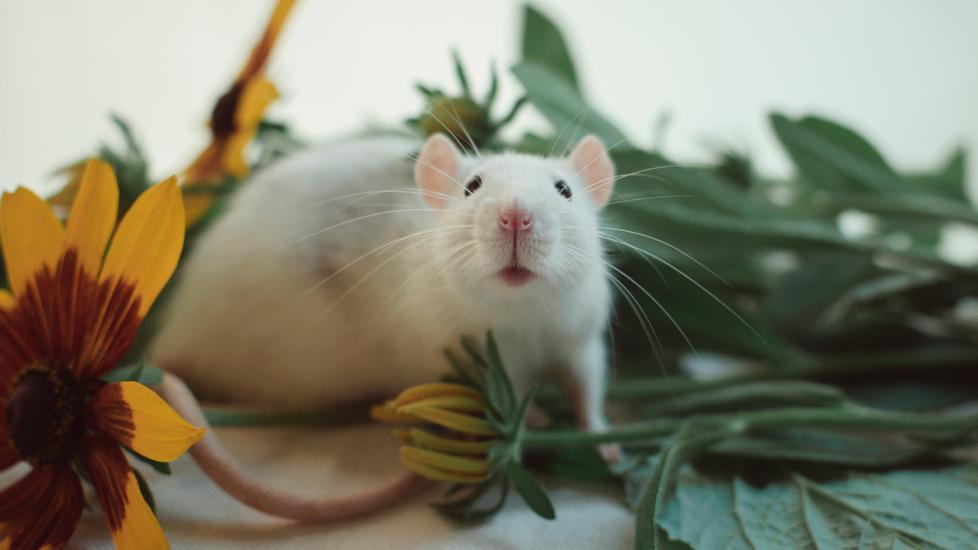Infectious Bacterial Staph Infection in Rats
Staphylococcal Infection in Rats
Staphylococcal infection in rats is caused by a bacteria belonging to the genus staphylococcus, a gram positive bacteria that is commonly found on the skin of many mammals, including rats, and which includes a number of species and subspecies, most of which are harmless to the body and are not implicated in disease.
When the immune system of the rat is compromised as a result of disease or other stressful conditions, staphylococcal numbers can flare up. Under these circumstances, if a rat happens to have an old unhealed wound, a fresh cut, or a fight wound, the staphylococcal bacteria can gain entry inside the body through these open wounds, resulting in a staphylococcal infection. The staphylococcal infection gets progressively worse when the rat keeps scratching at any injured part of the body.
Although this infection can occur in many species besides rats -- including humans -- it has not been found to be transmissible to humans by rats.
Symptoms and Types
- Inflamed skin and sores on the head and neck
- Formation of abscesses (pus filled swellings), which in turn may enlarge and spread under the skin to form lumps (tumors) around the face and head
- Ulcers or pus filled bumps on feet (ulcerative pododermatitis, or bumblefoot)
- Intense itching/scratching of affected areas
- Swollen belly due to internal swelling
Causes
This infection is caused by the presence of the staphylococci bacteria that is commonly found on the skin of most animals. While most staph bacteria remain harmless, some species can cause a diseased state of infection when they are able to gain entry into the body. One of the most common types of disease producing staphylococci bacteria is the S. aureus. Infection typically occurs when the skin is damaged by scratching or bite wounds, or when the skin is injured due to small abrasions.
Rats can acquire the infection from soiled bedding, or from coming into contact with infected urine or feces. Cages with wire mesh flooring have been implicated in increasing the incidence of foot lesions and subsequent infections of the foot. Rats with weakened immune systems are most likely to become infected.
Diagnosis
A diagnosis can often be made by the symptoms observed, but a fluid sample of the abscess will be necessary for a confirmation of the infection. Discharges from the affected areas can be collected and cultured in a bacterial culture medium. The diagnosis is confirmed by a bacterial culture of skin scrapings and fluid samples from the infected area.
Treatment
You should not try to drain an abscess on your own, since there is a danger of pushing the infected fluid deeper into the body, rather than out of the body. This could lead to a blood infection, sepsis, a fatal condition. You will need to take your rat to your veterinarian, who will drain the pus from the wound, irrigate the wound, and dress appropriately it to prevent further damage by the rat. It will also be necessary to use medication in the form of topical antibiotics containing steroids, to treat staphylococcal infections and oral antibiotic treatment to be sure that your rat makes a complete recovery.
Living and Management
Monitor your rat regularly for signs of illness, as disease conditions can be stressful and lead to an increase in staphylococcal numbers. It is advisable to clip the toenails of the hind feet to prevent any damage to the wound when the rat scratches it, and to prevent accidental injuries from occurring in the first place. Regularly follow your veterinarian’s advice regarding the application of medication to the wounds to help in the healing process.
Prevention
The primary preventative is to maintain excellent hygiene at all times. Cleaning your rats' living environment on a daily basis, clearing all urine, feces, and spilled food -- all of which can harbor the staphylococcus bacterium.
Take care to treat fight wounds and other open wounds promptly so that secondary bacterial infection due to the entry of staphylococcal bacteria does not arise. All wounds should be cared for immediately with thorough cleansing at least twice a day, observing the healing process until the wound has scabbed over and is healing without swelling or any other sign of inflammation. If any signs of swelling or inflammation develop, you should see your veterinarian immediately. If treated quickly and appropriately, these wounds can remain non-threatening.
Providing proper care and nutrition and avoiding stress to your pet rat can also help to prevent staphylococcal infection. Humans are also implicated in spreading infection, by handling an asymptomatic infected rat and not washing their hands and clothing before handling another rat. It is important to have a policy of always cleaning your hands thoroughly, in addition to changing your clothing before handling rats from different locations.
References
Featured Image: iStock.com/Svetlana Pazhiltseva
